This is the fifth in a series of ongoing blog posts from Smithsonian Libraries and Archives’ Audiovisual Media Preservation Initiative (AVMPI), spotlighting the labor of Smithsonian media collections staff across the Institution, and the first to feature a past Smithsonian worker. Among several current professional roles, former Smithsonian contract audiovisual consultant Rick Prelinger runs the non-profit Prelinger Library in San Francisco with his partner Megan.
AVMPI Co-Presents: Radio Preservation Task Force
On April 30th, Smithsonian Libraries and Archives’ pan-institutional Audiovisual Media Preservation Initiative (AVMPI) co-presented the fourth day of the Radio Preservation Task Force (RPTF) conference with the Library of Congress. The theme of the 2023 conference was “A Century of Broadcasting: Preservation and Renewal,” and Day Four’s proceedings were titled “Sunday at the Smithsonian,” comprising a radio/sound art performance, presentations by Smithsonian staff about SI radio collections, and a conference-capping ‘Listening Party’ that shared archival radio clips from a dozen international archives. A brochure of the program, designed by AVMPI’s Video Preservation Specialist and go-to graphic designer, Brianna Toth, can be accessed here.
Included in the day’s array of radio-related and Smithsonian-proud programming was a ‘response’ conversation between sound performers Anna Friz and Jeff Kolar with audiovisual archivist, and recent Emeritus Professor of Film and Digital Media at the University of California – Santa Cruz, Rick Prelinger. For over 40 years the self-described “library experimenter” Prelinger (@footage) has been a visionary figure in the field of film archiving and information science. The Prelinger Library he founded with his partner Megan in 2004 should be at the top of your list of places to visit when in San Francisco. Prelinger’s career has spanned working as a typesetter, running his own stock footage licensing company, working as an archivist at The Comedy Channel and HBO, serving as a board member and contributor to the legendary Brooklyn magazine Stay Free!, making films and footage performances, and teaching at several universities. I have been fortunate to know Rick personally since the late 2000s, previously encountering and obsessing over his commercially-released VHS compilations of incredible ephemeral films and television commercials when I worked at Chicago’s Facets Video in 1999. However, there was one professional role of Prelinger’s I was unaware of and, during the RPTF’s April 30th morning on-stage sound check, Rick disclosed it: he once worked for the Smithsonian (!?).
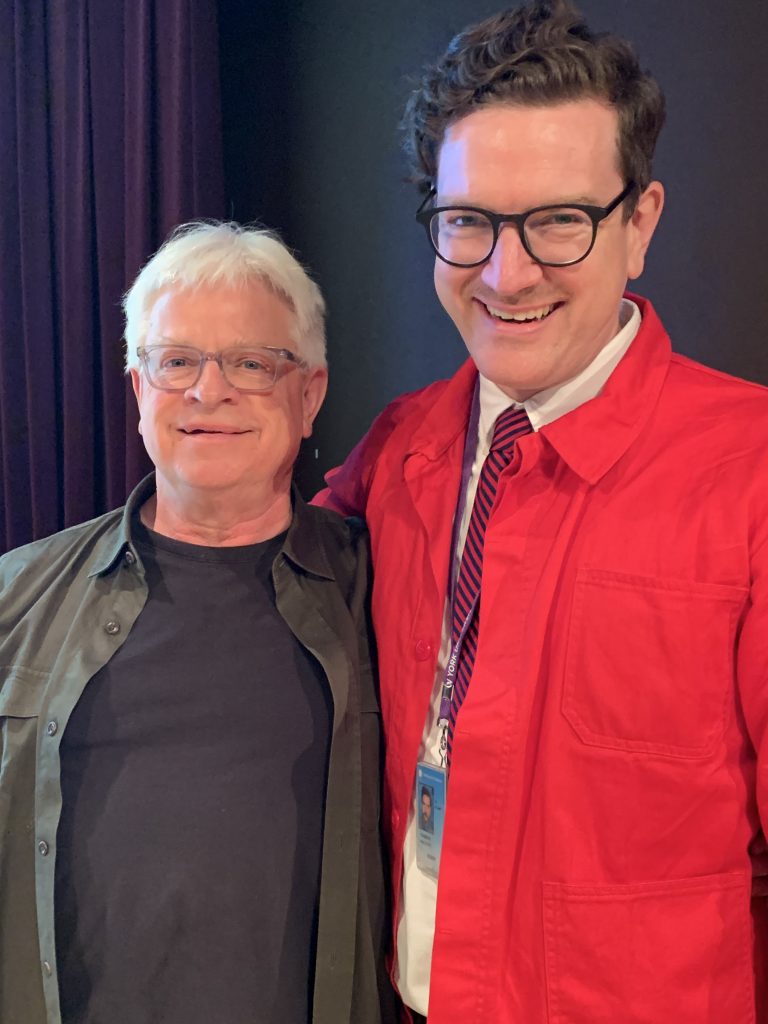
Smithsonian Institution – Office of Telecommunications
Frankly, I had a hard time fully concentrating on the remainder of the day’s activities after Rick recalled a paid gig working for the Smithsonian’s Office of Telecommunications (OTC), around 1989. The Office of Telecommunications was an iteration of the Smithsonian’s in-house audiovisual production entities, which began in the 1960s under the initiatives of Secretaries Leonard Carmichael and (far more aggressively) S. Dillon Ripley. In 1976 the media production activities of the Smithsonian’s Office of Public Affairs were formally reorganized as the OTC, and New York television producer Nazaret ‘Chick’ Cherkezian (previously at New York University, then National Educational Television) was appointed its director. One particularly mythological photo of Cherkezian held by Smithsonian Institution Archives has ‘Chick’ standing in front of a 1-inch VTR video rack and exuding a no-nonsense attitude.
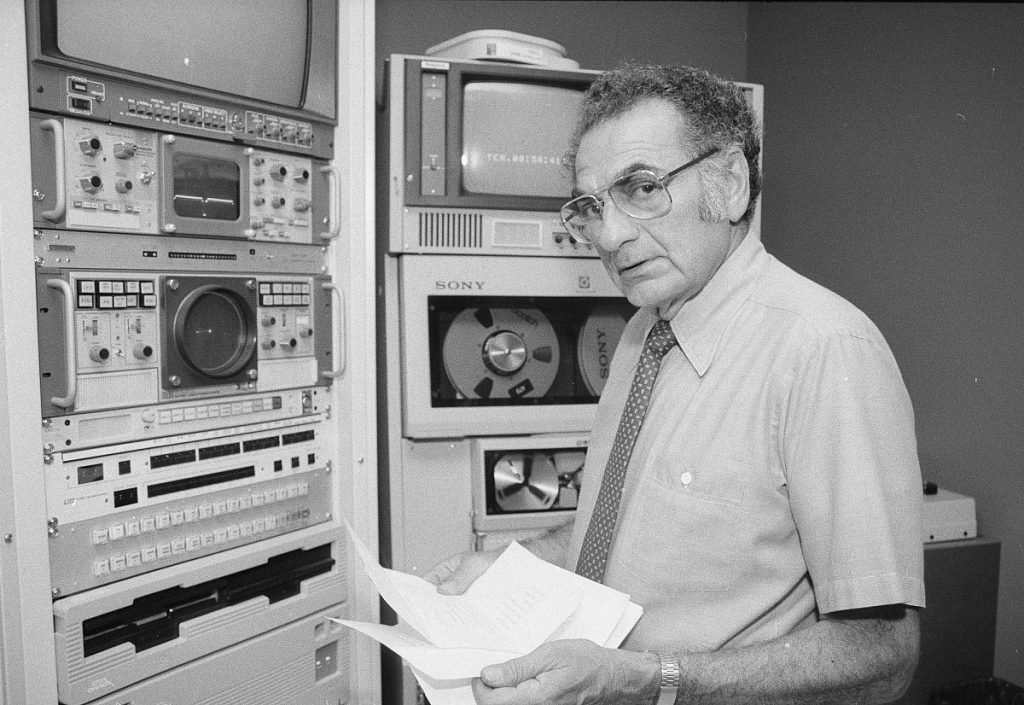
Cherkezian served as OTC Director from 1975 until 1986 and under his tenure OTC produced radio programs, exhibition videos, and a string of documentary films that won multiple awards, including four Emmys (for Celebrating a Century: The 1876 Philadelphia Centennial Exhibition, directed by OTC staff filmmaker Karen Loveland) and a string of CINE Golden Eagles, among others. Cherkezian set Institutional program priorities for OTC productions, brought media-wary curators into the fold across disciplines, built a staff of 14 full-time producers, and conceived the successful television programs, Smithsonian World (1984-1991) and Here at the Smithsonian (1982-1989). Thanks to the Smithsonian’s Institutional Historian Pamela Henson, Cherkezian’s oral history from December 3, 1986 captures a great deal about Cherkezian’s era of the OTC.
Cherkezian’s longtime ‘number two’ was OTC Associate Director Paul B. Johnson, who began as a Production Specialist on the Radio Smithsonian half-hour program in the early 1970s. Johnson, who appears at the helm of a pair of ¼” reel-to-reel audiotape machines on page 229 of the 1974 edition of Secretary Ripley’s annual report to Congress, Smithsonian Year, became OTC Director upon Cherkezian’s retirement, serving in the role until the division’s ultimate dissolution in 2002, when it was known as Smithsonian Productions.
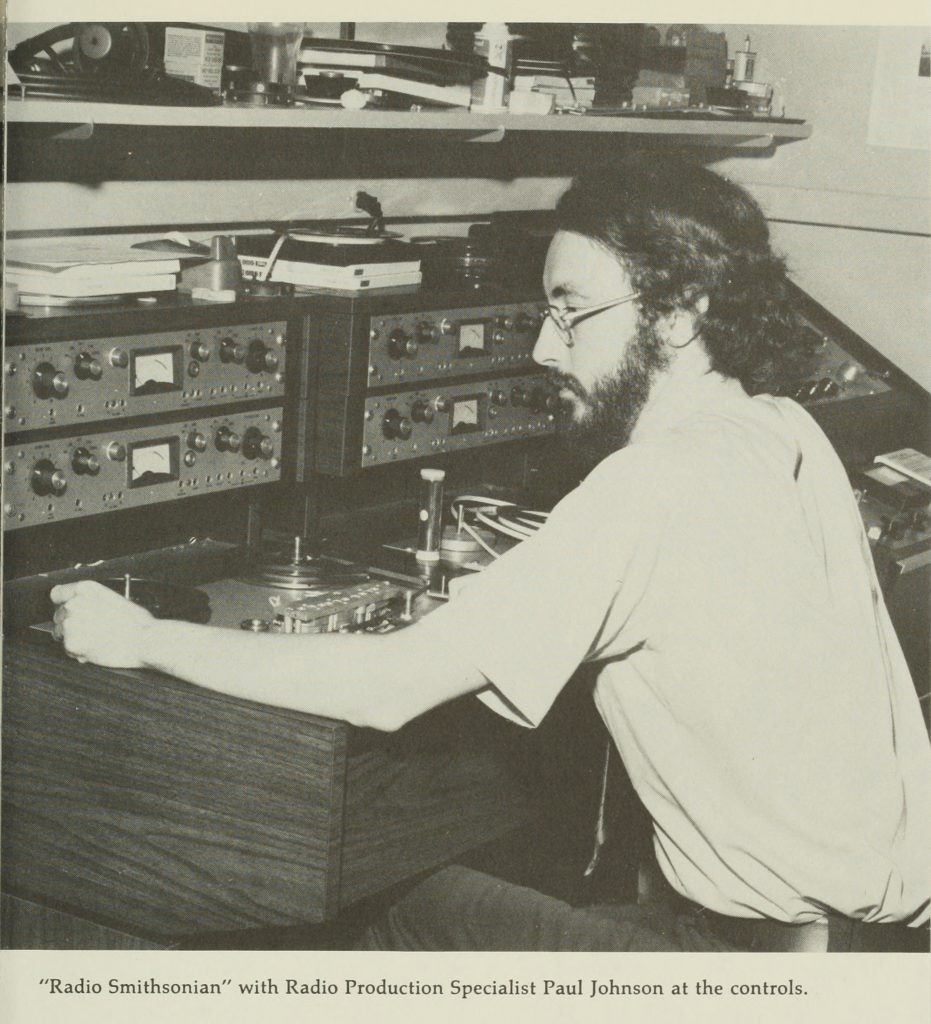
Rick Prelinger: Smithsonian OTC Consultant
Prelinger grew up in the Washington, DC area, and as we talked during our “Sunday at the Smithsonian” sound check he recalled being dropped off by his parents on weekends to navigate the Smithsonian’s multidisciplinary exhibits. “I remember that they still had the pull-out stamp drawers,” Prelinger said, referring to Joseph Leavy’s innovative 1914 philatelic showcase that lasted over a half-century in the Arts and Industries building.
As a DC native, Prelinger evidenced a degree of pride about his contract work as a Smithsonian consultant for Paul B. Johnson’s OTC, where he conducted a holdings survey and assessment report on the division’s audiovisual collections. Exact recollected details were hazy, but maybe he still had a copy? Before Rick left the RPTF event early to spend some time with his sisters who still live in the area, I promised to badger him about finding that copy.
On May 10th, Prelinger emailed me:
So I looked into this. I prepared it in 1989 for the Office of Telecommunications; my contact was [OTC Associate Producer] Jean Quinnette. It isn’t in my existing backups from that period, which makes me wonder whether I even used a computer. I will bumble around my hardcopy files for this period, if I can find any, but no promises. I am recalling that the report mostly covered internally produced film for Smithsonian TV — more of the video news release variety than programs intended for longform broadcast. And I think that I looked in metal cabinets in a number of Museum units. This is a perfect example of material disappearing into the amnesic pit of the 1970s and 1980s.
Rick wasn’t able to find any digital trace of his consultancy work for the Smithsonian, but he later wrote again to me:
It is almost unbelievable, but I opened a box at random and my Smithsonian folder was at the top. It contained my long-winded report from 1992 (not 1989). I was paid $400 for this — the invoices for travel reimbursement (maybe even on the Trump Shuttle) are laughable.
Rick Prelinger’s Rediscovered ‘Smithsonian folder’
Thanks to FedEx and my neighborhood copy shop, I’m thrilled to upload and make available much of the Smithsonian audiovisual collections treasure that Rick’s ‘Smithsonian folder’ contains. Prelinger is a longtime board member of the Internet Archive, which is where this documentation appropriately now lives.
The most substantive document contained therein is the fourth revised version of Prelinger’s report to OTC, dated November 1992. A priceless time capsule snapshot of OTC in an era when its long-running major television series Smithsonian World and Here at the Smithsonian had wound down, the report focuses on the idea that OTC might license stock footage for revenue purposes. Prelinger’s analysis and recommendations in this regard are sheer expert, informed by his first-hand concurrent operation of the New York City-based Prelinger Associates, Inc., and this report is one of the most detailed explanations of the stock footage landscape and how the footage licensing industry operated in the 1980s and 90s.
As a good film archivist, Prelinger also makes excellent recommendations regarding selection, physical conservation, and environmental storage: Isolate best copies of finished productions and move them to controlled storage; Develop and institute a retention policy that eliminates redundant inferior-quality copies and generational elements that exist elsewhere in better and more finalized versions; Research legal status of materials; Liaise with other Smithsonian audiovisual collections managers at museum units. All of these suggestions ring true as activities of our AVMPI project, in accordance with best practices of the field, and it’s refreshing to read that Prelinger communicated them to the Institution so long ago.
Prelinger’s ‘Smithsonian folder’ also holds a handwritten note on xeroxed Smithsonian stationery from OTC’s Jean Quinnette. The note conveys a certain familiar honesty about the slow pace of the federal government: “It was good to have you here last week. Makes it feel like something may really happen!”
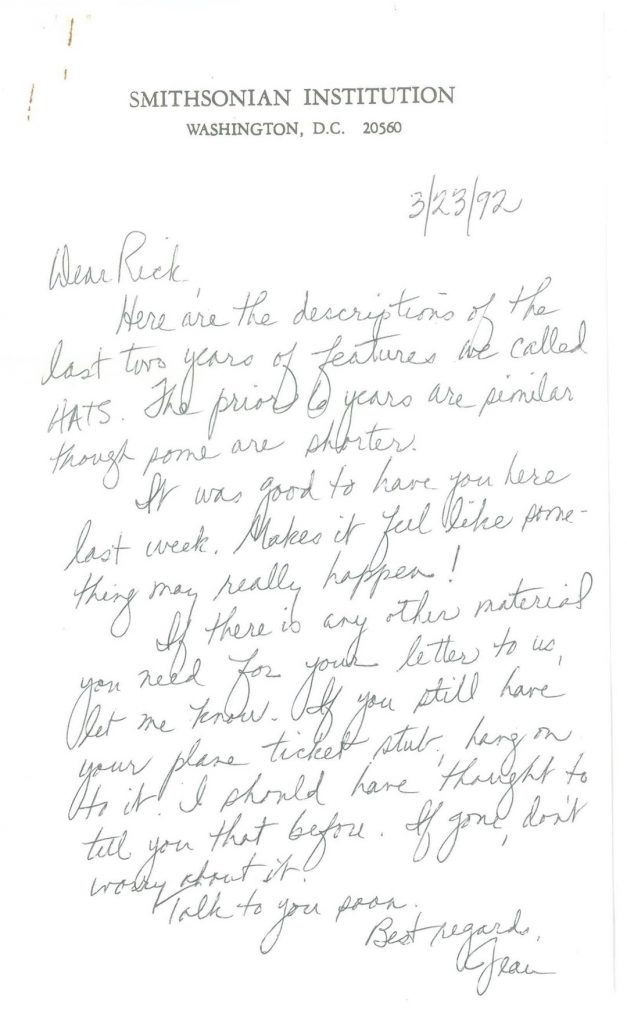
As Quinnette’s note references, Prelinger’s ‘Smithsonian folder’ also includes valuable original OTC documents with synopses, episode details, and air dates for its Smithsonian World and Here at the Smithsonian… (HATS) television programs. Both are series for which Smithsonian Libraries and Archives is currently digitizing videotape ‘master’ copies, with plans to stream them online in the coming year. These original promotional materials will helpfully inform our cataloging of both programs.
Several other film and video distribution brochures and a list of OTC-produced titles are also in Rick’s ‘Smithsonian folder,’ several of which contain the early-1990s OTC letterhead logo, which I have never seen before.
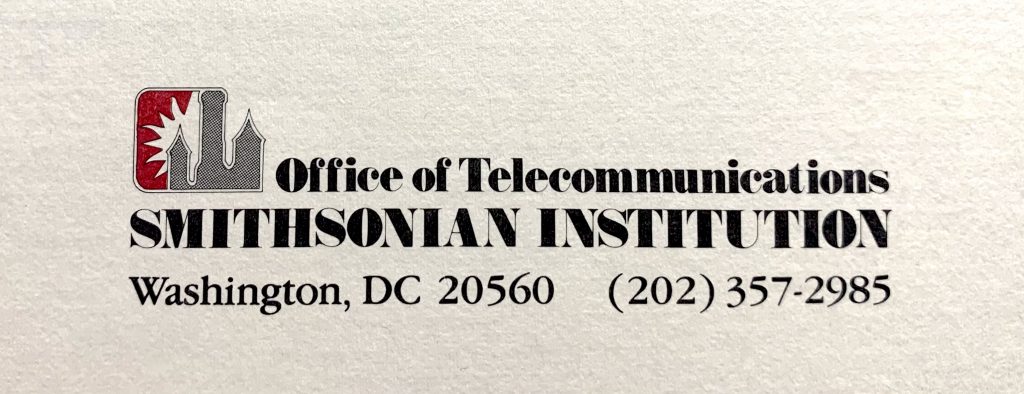
If Rick Prelinger’s stint working as a contract audiovisual archives consultant for the Smithsonian was, ultimately, a brief one, his impact can yet be seen through the many current SI audiovisual archives professionals who consider Rick’s advocacy and career as essential to the archives field and a model to aspire to. Thank you, Rick!
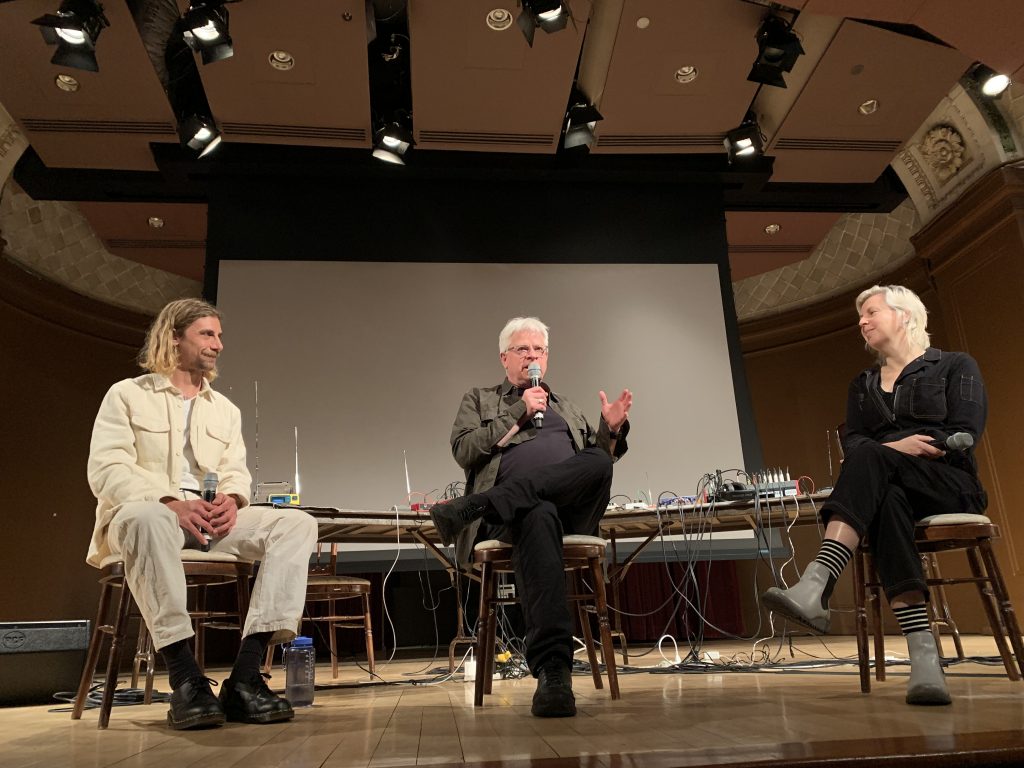


One Comment
Rick Prelinger is a living legend. Very interesting to learn of his past professional ties to the Smithsonian. Thank you for this AVMPI project.